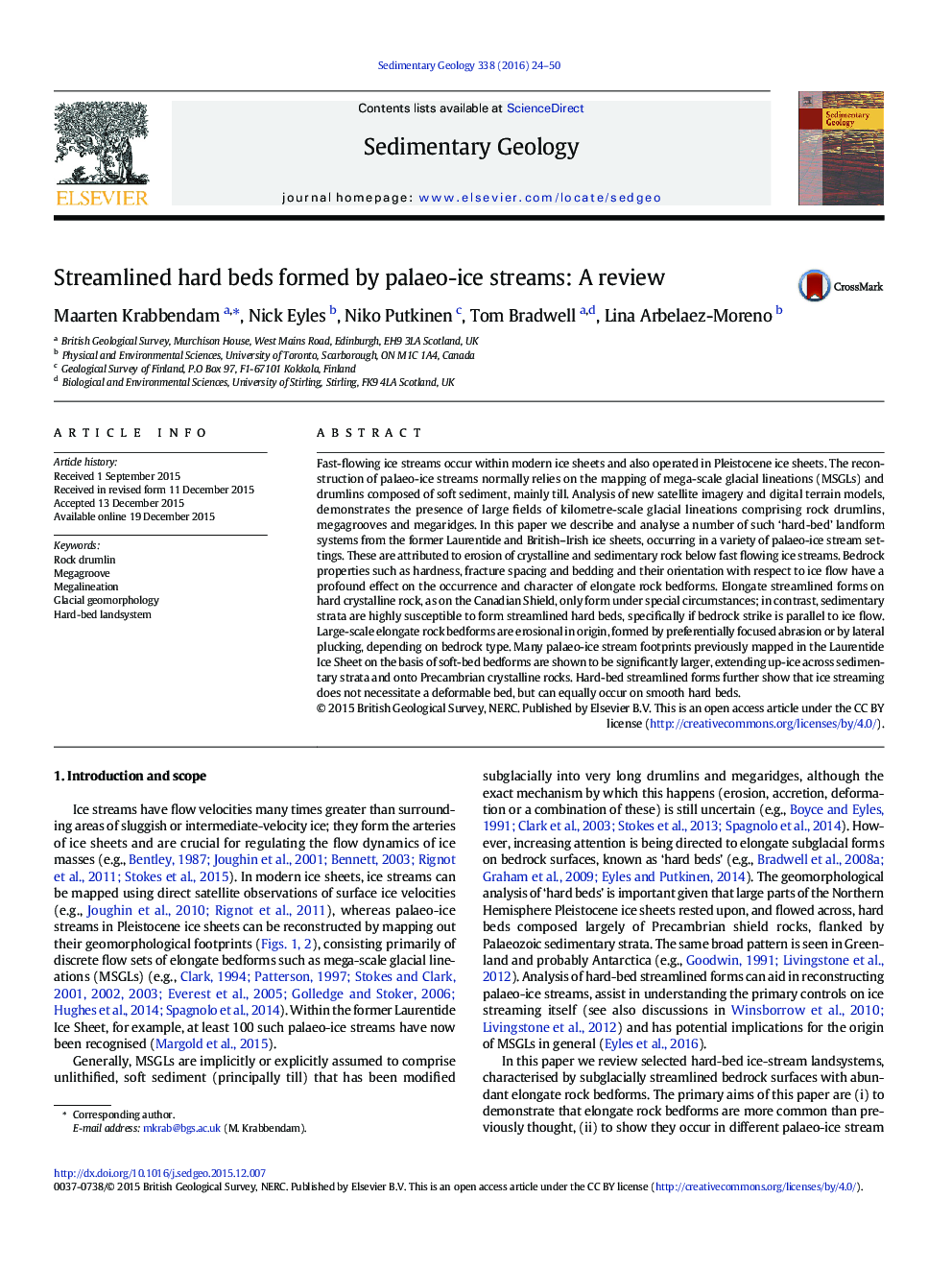| کد مقاله | کد نشریه | سال انتشار | مقاله انگلیسی | نسخه تمام متن |
|---|---|---|---|---|
| 6433177 | 1636025 | 2016 | 27 صفحه PDF | دانلود رایگان |
Fast-flowing ice streams occur within modern ice sheets and also operated in Pleistocene ice sheets. The reconstruction of palaeo-ice streams normally relies on the mapping of mega-scale glacial lineations (MSGLs) and drumlins composed of soft sediment, mainly till. Analysis of new satellite imagery and digital terrain models, demonstrates the presence of large fields of kilometre-scale glacial lineations comprising rock drumlins, megagrooves and megaridges. In this paper we describe and analyse a number of such 'hard-bed' landform systems from the former Laurentide and British-Irish ice sheets, occurring in a variety of palaeo-ice stream settings. These are attributed to erosion of crystalline and sedimentary rock below fast flowing ice streams. Bedrock properties such as hardness, fracture spacing and bedding and their orientation with respect to ice flow have a profound effect on the occurrence and character of elongate rock bedforms. Elongate streamlined forms on hard crystalline rock, as on the Canadian Shield, only form under special circumstances; in contrast, sedimentary strata are highly susceptible to form streamlined hard beds, specifically if bedrock strike is parallel to ice flow. Large-scale elongate rock bedforms are erosional in origin, formed by preferentially focused abrasion or by lateral plucking, depending on bedrock type. Many palaeo-ice stream footprints previously mapped in the Laurentide Ice Sheet on the basis of soft-bed bedforms are shown to be significantly larger, extending up-ice across sedimentary strata and onto Precambrian crystalline rocks. Hard-bed streamlined forms further show that ice streaming does not necessitate a deformable bed, but can equally occur on smooth hard beds.
Journal: Sedimentary Geology - Volume 338, 1 June 2016, Pages 24-50
